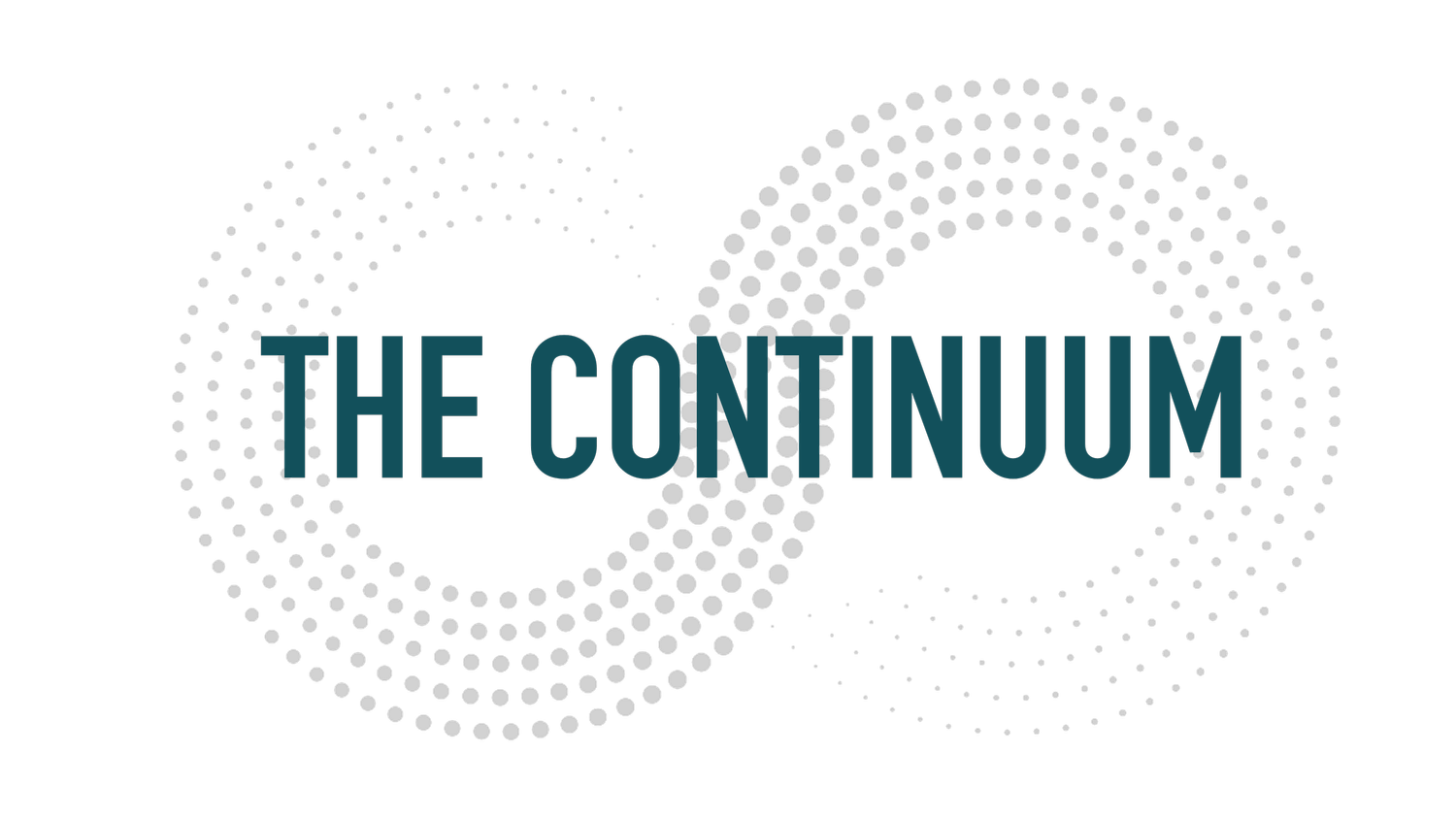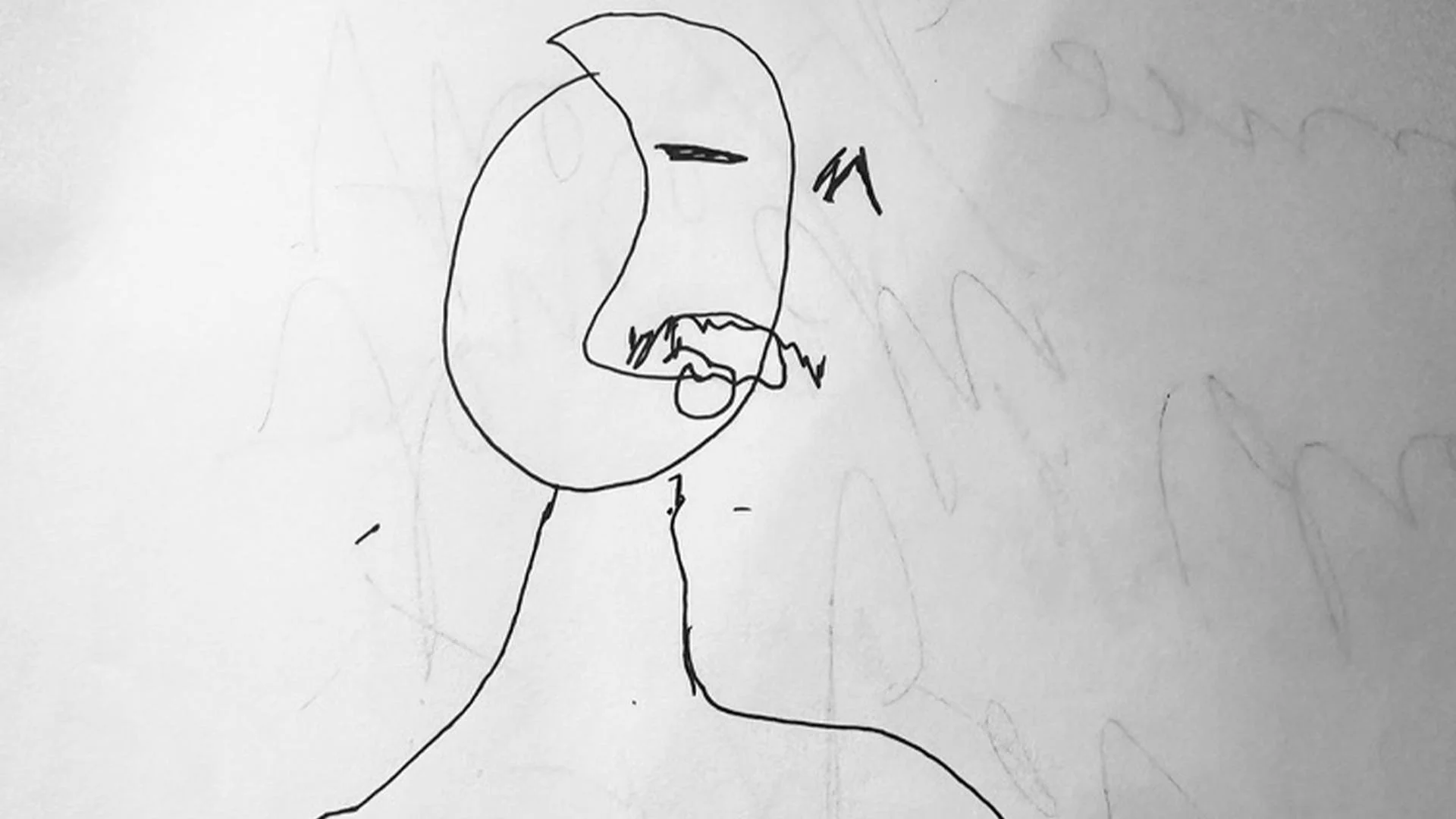IN PLAIN SIGHT
“blind-contour” portrait by Ocean —one continuous line drawn without ever glancing at the page.
There’s a quiet rebellion stirring inside brand rooms everywhere.
It doesn’t appear in QBR columns or dashboards. You can’t log into a portal and filter for it. More often, it lives in plain sight—a quickly sketched line in the margin, an off-hand remark that lingers longer than the keynote, a mischievous question that refuses to fit the brief.
This week I found myself in sessions filled not with traditional “creatives,” but with the creatively curious: CMOs hungry for differentiation, founders charting the next S-curve, CEOs who know spreadsheets won’t save them from sameness. They weren’t searching for another playbook. They were chasing creative clarity—the kind you feel in your bones before the data even has a chance to nod.
Blind-Contour Vision
If you’ve never tried blind-contour drawing, here’s the gist: fix your gaze on the subject—never on the page—and draw in one continuous motion. No edits. No erasing. Just trust between eye and hand.
Why start here? Because that act embodies the first rule of breakthrough creativity: look longer, judge later. Most brands glance, capture, file, and move on. They label instead of lingering. Blind-contour forces us to surrender immediate control, to notice subtleties we normally gloss over—the slope of a nose, the quiver of a line, the character of negative space. Only by suspending judgment do we let unusual angles emerge.
The same is true for ideas. Rush to categorize and you’ll miss their magic. Attend patiently and the ordinary becomes uncanny.
Creativity Isn’t Rare—Attention Is
We’ve taught ourselves to believe insight arrives through bigger dashboards. But dashboards don’t illuminate—they aggregate. Data tells us what happened; creativity tells us what could.
Think back to Apple’s “Think Different,” Patagonia’s “Don’t Buy This Jacket,” Dove’s “Real Beauty.” None were the result of a louder brainstorming tool. They were acts of noticing: an overlooked customer truth, a cultural tension hiding under the buzz, a blind-contour line the market hadn’t traced.
The power isn’t in the volume of information; it’s in the quality of perception. The business advantage now belongs to the leaders who cultivate radical attentiveness—who stand still long enough for nuance to speak.
Dali, Spoons & the Alpha Slipstream
Salvador Dali famously napped in a chair with a spoon poised above a metal plate. The moment he slipped into micro-sleep—the liminal alpha state where logic loosens and association blooms—the spoon clattered, snapping him back to consciousness. He’d then sketch whatever image surfaced in that fragile nanosecond between worlds.
Modern neuroscientists confirm what Dali intuited: the default-mode network thrives in semi-idle states. Daydreaming, steady runs, showers—these are not creative detours; they are designated construction zones for fresh neural pathways. In alpha, disparate nodes spark and weave into novel constellations—constellations a metrics-obsessed schedule would have starved.
As brand stewards, protect your alpha space. Guard it from meeting creep, from the tyranny of real-time dashboards. Great ideas often whisper when productivity shouts.
Design as Discovery (Not Decoration)
“Design thinking” is a phrase so over-laminated it can sound like jargon. Strip it back and it’s simply structured curiosity. The discipline of dwelling in ambiguity, empathizing before optimizing, shaping conditions where insight can surface, then sculpting it into something use-ful and beautiful.
At its best, design reframes reality. It turns a blind-contour doodle into the blueprint of a better service, a playful question into a billion-dollar product line. For leaders, the mandate is clear:
Interrogate assumptions. Ask why five times.
Prototype perspective. Explore ideas in scrappy, living form—before research strangles them.
Iterate with intent. Refine, don’t revise; evolve, don’t dilute.
Do this, and you’ll discover that many “innovations” are really rediscoveries—answers long present, awaiting the right angle of view.
Creative Clarity > Creative Volume
Ideas aren’t scarce. Signal is. Every team has Slack channels, Miro boards, buried Google Docs bursting with thoughts. What most lack is a signal-sorting instinct—the sense to recognize the single embryonic idea worth amplifying and the courage to let the rest stay compost.
That instinct is sharpened by discipline, yes, but also by slowness. By allowing nascent thoughts to breathe before pouncing on feasibility. By listening for the subtle spark that lights your gut on fire. Pay attention to that spark—it’s insight knocking.
The Brand Leader’s Lens
If you lead a brand, you don’t merely manage assets; you curate meaning for everyone who touches, tastes, hears, or feels your work. Meaning can’t be A/B-tested into existence. It grows from presence, bravery, and a tolerance for imperfect lines—just like that blind-contour portrait.
So:
Step back from the dashboard.
Linger on the obvious until it turns strange.
Protect alpha hours like budget line items.
Trust blind contours—let a line wander before you decide what it is.
The breakthrough you’ve been chasing? It’s been quietly waiting on the periphery, humming a familiar tune. All you have to do is tune in.
Slow down.
Squint sideways.
See differently.
Because the future belongs to brands that make the invisible visible—those who find gold in plain sight.
July 1, 2025
© 2025 The Continuum

